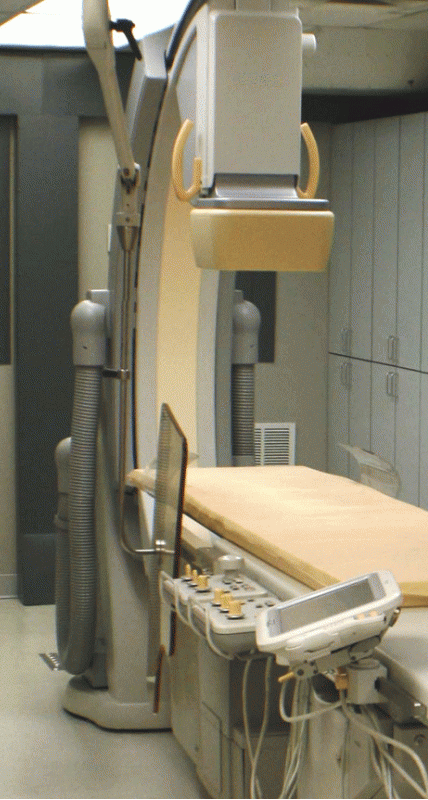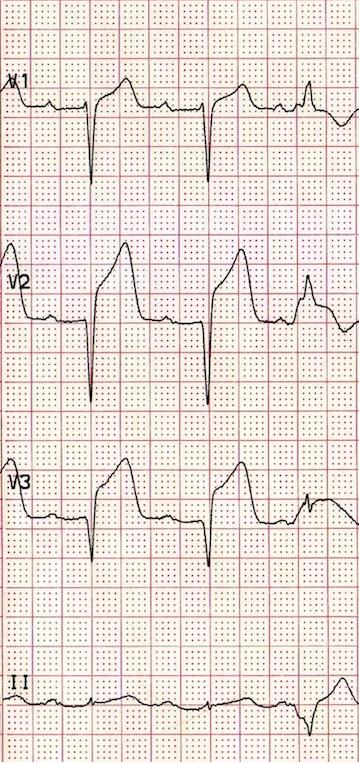Plain Old Balloon Angioplasty
When PCI is performed with balloon angioplasty alone, it is referred to as plain old balloon angioplasty (POBA). Prior to the development of stents, balloon angioplasty was the only alternative to coronary artery bypass grafting. Today it is primarily used as predilation of stenotic lesions prior to stent deployment, post stent dilation for optimal wall expansion, treatment of acute coronary myocardial infarction prior to coronary artery bypass grafting, and in small diameter arteries that stenting may be contraindicated.
The balloon catheter is designed with a low-profile to make it more trackable and pushable through the coronary vascular system. The balloon shaft contains a lumen from the hub to the balloon to allow inflation and deflation.
Over-The-Wire or Monorail
An additional lumen is required for tracking the balloon catheter on a guidewire. When this lumen extends along the entire shaft of the catheter, it is known as an over-the-wire balloon catheter. Over-the-wire balloon catheters are helpful in positioning guidewires through tortuous coronary anatomy, provide greather support for crossing difficult lesions, and allow for guidewire exchanges without losing distal positioning. The disadvantage of over-the-wire balloon catheters is the need for long exchange length guidewires (300cm length) to exchange interventional catheters without losing wire positioning. Long exchange wires can be cumbersome to work with at the back of the procedure table.
When the guidewire lumen only extends from the tip of the balloon through to the distal third of the shaft, the balloon catheter is known as monorail or rapid exchange (RX). Monorail systems allow for a lower profile and are easier to exchange catheters over shorter length guidewires.
Compliant or Non-Compliant (NC)
Compliant balloons are made of material that makes them easier to advance into the coronary vasculature and to cross stenotic lesions. Complaint balloons will increase in diameter as the inflation pressure is increased. Think about what the word compliance means - conforming to a rule. As inflation pressure increases, so will the balloon. These balloons will have a compliance chart that gives you an idea on what the diameter size will be at a particular inflation pressure. Nominal pressure is the recommended pressure to inflate a balloon to its manufactured size. When a compliant balloon is inflated against a rigid lesion, the lesion will prevent the balloon from expanding in diameter so the balloon will expand in length. This situation could potentially cause damage to the normal segments before and after the lesion.
Non-Complaint (NC) balloons are made of material that allows the balloon to retain the specified diameter regardless of inflation pressure without elongating the balloon. NC balloons are helpful with rigid lesions that require high inflations pressures. These balloons are often used for post-dilitating stents to make sure the stent is well opposed to the arterial wall. Their disadvantage is found in their difficulty for maneuvering through the coronary vascular.
Prep the Balloon
- Carefully remove and inspect the balloon catheter from the package.
- Attach a stopcock to the balloon catheter inflation hub.
- Attach a syringe of 50% solution of contrast and heparinized saline to the stopcock.
- Open the stopcock and pull back negative pressure with the syringe.
- Carefully release the negative pressure allowing the balloon catheter to pull in the solution.
- Close the stopcock to the balloon catheter and purge any air out of the syringe.
- Repeat steps 4 to 6 a few times as necessary to remove air from the catheter.
- Carefully remove the stylet and balloon cover from the balloon catheter tip.
- Use the flushing needle and a syringe to flush the distal tip of the balloon catheter with heparinized saline.
- Submerge the catheter in heparinized saline to activate any hydrophilic coating on the shaft of the catheter.
References
- Baim, D.S. (2005) Grossman's Cardiac Catheterization, Angiography, and Intervention. (7th ed.). Philadelphia,Pa: Lippincott, Williams & Wilkins.
- Kern, M. et al (2003) The Cardiac Catheterization Handbook (4th ed.). Philadelphia, Pa: Mosby.

